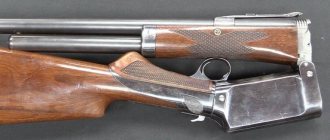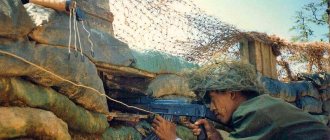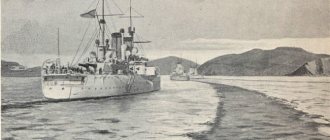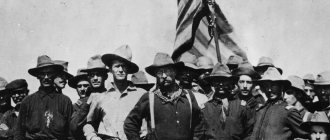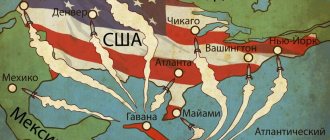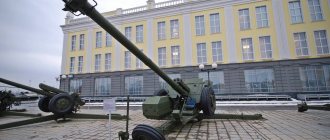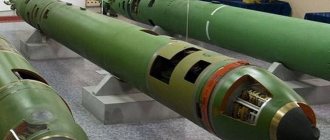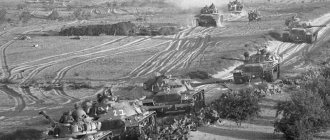Prerequisites
Anglo-Egyptian controversy
Channel history
The Suez Canal opened in 1869. The canal was originally built as a Franco-Egyptian project. However, in the 1870s, under Prime Minister Disraeli, Great Britain bought the Egyptian share (44%) from the Egyptian government, which had problems paying its debts.
The canal was initially of great strategic value to Britain, as it greatly simplified communication between Britain and distant parts of the British Empire. In the 20th century The canal gained additional importance because it simplified the route from Europe to the oil fields of the Persian Gulf.
After the outbreak of World War I, Britain declared Egypt its protectorate (at this point it was de jure considered part of the Ottoman Empire). In February 1915, Turkish troops approached the canal but were repulsed by the British, who went on the offensive and captured Sinai and Palestine.
In 1918, the Ottoman Empire collapsed and its Arab possessions were divided between England and France.
In 1922, Britain granted Egypt nominal independence.
In 1936, an agreement was reached between England and Egypt, according to which Egypt became a completely independent state, but British troops remained in the canal zone for another 20 years until 1956 (this year the agreement was to be revised and could be extended).
During the Second World War, the canal became the target of an attack by German-Italian troops from Libya.
After the battles in 1940-43. they were defeated by the troops of the British Empire and the United States (attacking from Morocco).
Nationalization of the canal by Egypt
British-Egyptian tensions intensified with the rise of Egyptian nationalism. In 1951, Nahas Pasha, the leader of the Egyptian nationalist Wafd Party, which won the elections, annulled the 1936 treaty.
Soon attacks on British soldiers began. On January 25, 1952, the British attacked an Egyptian police station in Ismailia in the Canal Zone. At the same time, about 50 Egyptian police were killed and hundreds were injured. As a reaction to this attack, anti-British riots occurred in Cairo the next day, during which offices and businesses of Western companies were destroyed and burned, and about 17 British were killed (these events are known as Black Saturday).
The British threatened to occupy Cairo and King Farouk of Egypt was forced to dismiss Nahas Pasha.
In July 1952, King Farouk was removed by the Revolutionary Command Council. The post of president and prime minister was soon occupied by Abdel Nasser.
The British government entered into negotiations with the new government regarding the future of the Suez Canal. On October 19, 1954, an agreement was signed between the parties for a period of 7 years, providing for the evacuation of British troops from Egypt by June 1956.
At the same time, British military bases had to remain in the Canal zone and be supported by British and Egyptian civilian specialists; if a danger to the canal arose, British troops could return there. Egypt also pledged not to interfere with freedom of navigation through the canal.
In February 1955, Great Britain refused to sell weapons to Egypt, which worsened relations between the countries. Egypt entered into an arms supply agreement with the USSR.
In July 1956, relations between the countries deteriorated further as a result of the fact that Great Britain and the United States, which had promised Nasser to help finance the construction of the Aswan Dam, refused to finance this project (primarily due to the conclusion of an agreement between Egypt and the USSR on the supply of weapons).
In response to this refusal, on July 26, 1956, Nasser's government announced the nationalization of the Suez Canal in order to use the funds received from its operation to build the Aswan Dam.
At the same time, the interests of the main former owners of the channel - the largest financial and industrial groups of Great Britain and France - suffered. These groups, which included banking groups controlled by branches of the Rothschild family, as well as financial circles close to the British royal family (sometimes referred to in the literature as "historic shareholders of the East India Company"), began to look for an opportunity to restore their rights.
Controversy between Egypt and Israel
Egyptian-Israeli relations in 1948-56.
During the Arab-Israeli War of 1948, Israel managed to repulse the advance of the Egyptian and other Arab armies and capture more than half of the territory allocated by the UN for an Arab state in Palestine.
Negotiations between Israel and Egypt on a peace treaty began during the war in September 1948. Egypt offered peace in exchange for part or all of the Negev, but Israel rejected these proposals. Egypt put forward similar proposals in secret negotiations until 1952.
In July 1952 in Egypt, the Revolutionary Command Council under the leadership of General Mohammed Naguib overthrew King Farouk in the “Egyptian July Revolution.”
Later, the state was headed by one of the Council members, Colonel Abdel Nasser. The Israeli government welcomed the coup, but peace talks made no progress, although secret contacts between Israel and Egypt continued.
In 1954-55, relations between the countries worsened. This was due both to the infiltration of fedayeen militants from the Egyptian side and to Israeli military actions and provocations.
One of these provocations was Operation Susanna, when the Israeli intelligence service Mossad tried to organize a series of terrorist attacks in Egypt against Western targets and blame them on Egyptian Islamists and leftists in order to ruin Egypt’s relations with England and the United States. After the failure of the operation in Israel, a domestic political scandal called the “Lavon case” broke out.
In 1955, Great Britain and the United States proposed a peace plan between Israel and Egypt, according to which, in exchange for a peace agreement, Israel would transfer part of the southern Negev to Egypt (to create a corridor between Egypt and Jordan), and would also accept some Palestinian refugees, and others would provide compensation.
This plan was called Plan Alpha. Egypt responded by demanding the entire Negev, and Israel refused to cede even its southern part.
Suez Canal
On September 1, 1951, the UN Security Council obliged Egypt to open the Suez Canal to Israeli shipping. Egypt refused to comply with this instruction. American analyst, director of the Virtual Jewish Library Mitchell Bard, quotes in his book from the Egyptian newspaper Al-Misri, according to which in April 1954 the Egyptian Minister of Foreign Affairs stated that
“The Arab people declare without any embarrassment: we will not be satisfied with anything other than the complete elimination of Israel from the map of the Middle East.”
At the same time, in 1955, Egyptian President Nasser wrote in Foreign Affairs magazine: “Israel's policy is aggressive and expansionist... However, we do not want to start any conflict. War has no place in the constructive policies we have developed to improve the lot of our people. We have a lot to do in Egypt... War will make us lose a lot of what we strive to achieve."
At the same time, in internal documents later captured by the Israelis, the Egyptian army set the goal of the complete destruction of Israel.
Rapprochement between Egypt and the Warsaw Pact countries
Israel was also concerned about the rapprochement between Egypt and the Warsaw Pact countries, from which Egypt began to receive the latest weapons.
The situation on the border between Egypt and Israel
In 1948-56. On the border between Israel and the Egyptian-occupied Gaza Strip, thousands of state border violations occurred annually on the Egyptian side. According to one of the "new historians" Benny Morris, the bulk of the infiltrators were Palestinian refugees who wanted to get back to their homes or families in Israel, and only less than 10% of the infiltrators were intended to sabotage or attack the Israelis.
Among these terrorists, fedayeen prevailed - supporters of Mufti Amin Al-Husseini, who sought to provoke a conflict between Israel and Arab countries.
In 1948-56. from the fire of the Israeli border guards and the mines they laid on the border, between 2,700 and 5,000 border violators, mostly unarmed, died.
However, Morris claims that in 1955, Egyptian intelligence in the Gaza Strip began recruiting and sending its fedayeen in response to Israeli attacks on the strip.
On August 31, 1955, Egyptian President Gamal Abdel Nasser stated that
“Egypt has decided to send its heroes, the disciples of Pharaoh and the sons of Islam, and they will cleanse the land of Palestine... There will be no peace on the border with Israel, because we demand revenge, and revenge is the death of Israel.”
Moshe Dayan, Israel's chief of staff at the time of the Suez crisis, describes the situation on the Egyptian border this way:
“...after the War of Independence of 1949 and before the Sinai Campaign, Israel knew no peace from terrorists. Gangs of Arab infiltrators, trained and armed by Arab governments, entered the country, killed civilians, planted mines, and blew up water pumps and power poles. Egypt (from the occupied Gaza Strip), Syria and Jordan (which occupied the West Bank and East Jerusalem) were actually waging a guerrilla war against Israel, although they did not openly admit it.”
As the Israeli representative to the UN Abba Eban stated,
“In the six years following the 1949 armistice, Egyptian hostilities killed 101 Israelis and wounded 364. In 1956 alone, 28 Israelis were killed and 127 wounded as a result of Egyptian aggression.”
However, according to Morris, many of the dead were “accidentally” killed as a result of purely criminal raids or smugglers, and were not victims of terror: for example, in 1950, of the 30 “civilian” Israeli victims, 19 were security guards and police officers. In his opinion, the increasing number of armed people among the infiltrators was due to the fact that the Israeli side used “violent measures” against the violators (lethal fire was opened on the violators).
Secret Sèvres Agreements
The nationalization of the Suez Canal was a surprise move for England and France, who did not have units that could be immediately involved in establishing control of the canal while world public opinion was on their side.
France had significant military units in Algeria, and England had significant military units in Jordan. Such a pause made it possible for Egypt to take a more flexible position on the issue of the regime for using the canal; in particular, it was stated that Egypt guaranteed the right of unhindered passage of ships (with the exception of Israeli ones) through the Suez Canal. Under such circumstances, the military operation of England and France would no longer have broad support from the Western community.
On October 22, 1956, a secret meeting took place in Sèvres (France), which was attended by: from the Israeli side - Prime Minister Ben-Gurion, Chief of the General Staff Moshe Dayan and Director General of the Ministry of Defense Shimon Peres; on the French side - Minister of Defense Maurice Burges-Maunoury, Minister of Foreign Affairs Christian Pinault and Chief of the General Staff Maurice Schall; on the British side - Foreign Secretary (Minister) Selwyn Lloyd and his assistant Sir Patrick Dean.
The negotiations lasted 48 hours and ended with the signing of a secret protocol. According to the developed plan, Israel was to attack Egypt, and England and France were to then invade the Suez Canal zone, explaining their actions “to protect the canal and the need to separate the warring parties.”
It was assumed that at the end of the war, Israel would annex the entire Sinai, or at least its eastern third along the El-Arish - Sharm al-Sheikh line. Israel at the same time pledged not to attack Jordan, and Great Britain not to provide assistance to Jordan if it attacked Israel.
At the insistence of the Israeli delegation, which feared non-fulfillment of obligations on the part of its allies, the treaty was drawn up in writing, signed and handed over to each of the parties.
At the negotiations, Ben-Gurion initially proposed a plan for a major redrawing of borders in the Middle East. Jordan, according to this plan, was to be disbanded, with the part east of the Jordan River annexed by Iraq, and the part west of the Jordan River transferred to Israel.
The southern part of Lebanon up to the Litani River would, according to this plan, go to Israel, and Lebanon would have to give up some of its Muslim-majority possessions and become a Christian-majority republic allied with Israel. However, the French and British did not approve of this plan and convinced Ben-Gurion to focus on Egypt.
Egyptian Gloster Meteor. Suez War 1956 - Israeli invasion.
To understand the chain of events that led to a short war between Egypt and three aggressors (Israel, Great Britain and France) in the fall of 1956, we will have to digress to issues far removed from Gloster Meteor and aviation in general.
The new nationalist leadership was eager to transform Egypt from a "medieval society" into a modern country. Already in the middle of the 20th century, it was clear that this would not be possible without electrification of the country. One of the most important tasks for Egypt was the construction of the high-rise Aswan Dam, thanks to which the country could solve two major problems - regulate the annual flow of the Nile, providing agriculture with water and obtain a huge amount of cheap electricity for industry. The only catch was the absolutely prohibitive price of this project.
Having ended direct colonial dependence, that is, having freed itself from a “short leash,” Egypt found itself faced with a new dependence on the West. Realizing that Egypt is not capable of building the Aswan Dam on its own, the leadership of Great Britain and the United States, as well as their “tame” World Bank, out of habit “twisted” Cairo’s arms; now its obedience must be ensured by a financial stranglehold in the form of a loan for construction. Moreover, just to receive this loan, the Egyptian leadership already had to wag its tail and faithfully look into the eyes of the owners.
In an effort to avoid this, Cairo moved towards rapprochement with the Soviet Union, which provided a loan for the construction of the Aswan Dam on very lenient terms in order to finally “knock out” the British from the Egyptian fiefdom in the context of the outbreak of the Cold War.
A real shock for everyone was the conclusion of the so-called “Czechoslovak arms deal” in 1955. In exchange for cotton raw materials for its light industry, Czechoslovakia undertook to supply a large number of all kinds of weapons - tanks, artillery, ammunition and aircraft. Moreover, if Great Britain sold out-of-date Vampires and Meteors a year by the teaspoon, Czechoslovakia pledged to immediately supply 80 MiG-15s and 6 MiG-15UTIs of its own production, which at that moment were still quite modern. Through the Czechs, the Soviet Union sold to the Egyptians 12 even newer MiG-17s, as well as 45 Il-28 jet bombers. In addition to the combat vehicles, there were various training and transport aircraft.
Shalabi Al Hinnawy in the cockpit of an Egyptian Meteor F-8 in 1954. Soon he became one of the first to master the MiG-15
As a result, Egypt also began to get rid of the weapons dependence of its army on the British. And here President Nasser got carried away - in order to make it easier for the country to repay the loan for Aswan, he waited for the withdrawal of British troops from the Suez Canal zone in the summer of 1956 and a week later announced the nationalization of this important shipping artery. This was not only a financial blow to British capital, but also a slap in the face of Great Britain. The Empire planned a retaliatory strike against the “bad guy”, began to work out an operation plan and strengthen its military group in the Mediterranean.
It soon became clear that two more countries were ready to participate in the adventure. First of all, this is Israel, which arose and existed in a hostile Arab environment. After the 1st Arab-Israeli War, hundreds of thousands of Arabs were thrown out of the former Palestine, and their lands were seized. Egypt actively trained and armed Palestinian “fidayeen” detachments, which carried out raids on adjacent territory, attacking Israeli border guards, military and Jewish settlers developing the occupied lands. In response, the Israeli army carried out its raids, raids and shelling, also not disdaining the destruction of the Arab population, such as the massacre carried out in Qibiya or the shelling of residential areas of Gaza City.
Pre-war photo of eight Egyptian Meteor F-4s and "long-nosed" F-8s over Cairo.
After President Nasser closed the Straits of Tiran to Israeli shipping, the Israeli leadership began planning its own attack on Egypt, guided by the common sense idea that the enemy must be destroyed before it became sufficiently strong thanks to the Czechoslovak arms deal.
At the same time, Great Britain and Israel were, to put it mildly, not allies. Britain has not yet forgotten the murders of British soldiers and officials by Jewish terrorists in Palestine in 1946-1948; now these people became respected politicians and ministers in Israel. The British also tried to maintain the remnants of their influence in the Arab world, in particular in countries hostile to Israel such as Jordan and Iraq. The British sold Meteora to the Israelis in quantities comparable to Egypt, but it was pure business. In general, the parties did not feel any trust in each other.
The connecting link of the “Triple Aggression” was France, which had its own account with the Egyptian authorities. The fact is that since 1954, a bloody colonial war was going on in French Algeria against local “independence fighters.” In France, Algeria was considered not a colony, but an integral part of the country since 1834, in which approximately a million ethnic French lived, with a significant numerical predominance of Algerians. The Cairo leadership supported the ideologically close Algerian nationalists in every possible way in their armed struggle, and not only with words. It was on this basis that France began to actively “make friends” with Israel against Egypt, actively supplying Tel Aviv with jet aircraft and tanks.
In fact, all three aggressor countries were united only by a common enemy - Egypt and its president Nasser. Unlike Israel, such “decent” countries as France and Great Britain needed some plausible pretext for an attack, so a joint plan was developed in which Israel was assigned the role of a “scumbag” who would be the first to strike Egypt, destroying the Sinai group of the enemy army and overlooking the approaches to the Suez Canal.
After this, England and France declared that the fighting in the Suez Canal area “pose a threat to world shipping”, put forward an ultimatum to “the warring parties to withdraw troops 15 km from the canal”, Israel should not have gone there, and Cairo predictably refused to comply with this demand, after which, as if on cue, the second phase of the operation played out - the Anglo-French forces began to bomb Egypt throughout the entire depth of the territory, then the landing and capture of the Suez Canal, the military defeat of Egypt and the fall of the hated President Nasser.
The arrival of large numbers of jet aircraft from Great Britain, Italy, Czechoslovakia and the Soviet Union in 1955 and 1956 led to marked changes in the structure of the Egyptian Air Force. If Gloster Meteor, obtained in homeopathic doses, had previously been considered the best Egyptian fighters, now they were replaced by the role of fighter-bombers and training vehicles. Organizational arrangements went on continuously, and they also affected the Gloster Meteor fighters - the 20th squadron began rearmament with the MiG-15, handing over its Meteors to other units. All Gloster Meteor F-8s, and at least one Meteor T-7, ended up with the 5th Squadron, which had previously flown piston engines. The squadron was commanded by Major Mohammed Hilmi, the squadron was based at the front-line El-Arish airbase near the border with Israel, but by the beginning of the triple aggression it was transferred to Fayid in the Suez Canal zone.
The Meteor F-4 from the 20th Squadron was one of 8 such fighters deployed to Dekhale Air Base near Alexandria when the first MiG-15s for Egypt were unloaded there. A few months later, fighters of this modification were withdrawn from combat service to the “second line of the Air Force” - the 40th squadron, whose task was to retrain for jet technology.
The older F-4 Meteors and three T-7 Meteors were assigned to the newly formed 40 Squadron FTU (Fighter Training Unit). The latter exploited them on a par with Vampires, retraining young pilots for jet aircraft.
Night interceptors were allocated to a separate, 10th squadron of the EAF, but in fact this squadron was more of a unit, having 4-5 serviceable vehicles and a couple of crews trained for night interceptions. According to other sources, Meteor NF-13s were not a separate squadron, but were part of the Fighter Training Unit, and at least a pair of Meteor NF-13s were also based at Fayid.
In general, by the beginning of the triple aggression in October 1956, the Egyptian Air Force had the following structure of combat and combat training units:
Eastern zone
, headquarters - Ismailia
5th Squadron - Fayid, 8 Meteor F-8, 1 Meteor T-7
20th Esq. — Kabrit, 12 MiG-15bis, in the process of development
30th Esq. - Abu Suair, 15 MiG-15bis
31st Esq. — Kasfarit, waiting to receive the MiG-15bis
40th Esq. (FTU) - 8 Meteor F-4, 3 Meteor T-7, 10 Vampire FB-52, 4 Vampire T-55
MiG OTU (Operational Training Unit), Kabrit - 12 MiG-15bis, 10 MiG-15UTI
Central zone,
headquarters - Almaza
1st Esq. - Almaza, 18 MiG-15bis, 12 MiG-17F
2nd Esq. — Cairo West, 20 Vampire FB-52
8th Esq. — Inchas, 12 Il-28
9th Esq. — Inchas, 12 Il-28
Il-28 OTU (Operational Training Unit), Luxor - 20 Il-28 and Il-28U
10th Esq. — Diamond, 2 combat-ready Meteor NF-13 + 4 faulty
Also in Almaz, as part of the Advanced Flight Training School, there were 8 Hawker Furys, 15 Spitfire Mk-22s and 20 Fiat G-55s.
However, all of the forces listed were largely theoretical. For example, on the 45 IL-28s received there were 8 at least somewhat trained crews. 6 pilots were retrained on the 12 assembled MiG-17Fs. Approximately 12 MiG-15s have already been destroyed during the development process. The total actual combat strength was 76 combat aircraft of all types, with approximately the same number of aircraft (but not crews) in reserve.
The Air Force had 6,400 personnel, of which 440 were pilots, but this number included everyone - instructors, pilots, navigators and flight engineers of transport aviation, and so on. 120 pilots were trained to fly jet aircraft, of whom 40 were considered to have completed the combat training course (all on Vampires and Meteors). Another 250-260 pilots were trained in Czechoslovakia and the USSR, but they were not supposed to begin arriving until next year.
The first act of the triple aggression against Egypt was to be the Israeli attack as part of Operation Kadesh. The Israeli Air Force attracted almost all aircraft capable of using weapons for combat operations. Primarily there were three jet fighter squadrons:
101st Esq. - 16 Mystere IV
113th Esq. - 22 Ouragan
117th Esq. — 11 Gloster Meteor F-8 and FR-9
Here it should be noted that the Israeli data provides only combat-ready aircraft, and not the total number - for example, the same "Hurricanes" had a total of 29 aircraft, while Arab aviation is usually listed en masse, despite its serviceability, including 45 half-assembled Syrian ones MiG-15, which had no trained pilots at all. Undoubtedly, this makes the victory of “David over Goliath” more convincing.
Two more Meteor NF-13 night interceptors and one crew for them were available in the 119th squadron. Three Meteor T-7s converted into reconnaissance aircraft and two PR-16 Mosquitoes made up the 115th Squadron.
Piston aircraft were widely used for bombing attacks on Egyptian ground targets; again, only combat-ready ones are listed:
105th Esq. — 13 Р-51D Mustang
110th Esq. — 13 Mosquito FB-6 and Mosquito T-33
116th Esq. — 16 Р-51D Mustang
140th Esq. — 17 Harvard (aircraft and Flight School instructors)
Before the start of the war, France actively “pumped up” Israel with tanks and planes; the Israelis also did not have enough trained pilots, so French pilots were put at the controls of 16 brand new Israeli Mystere IVs, and their documents were corrected in Hebrew. This temporary unit became 201 Squadron.
However, fears of “retaliation strikes” from the Egyptian Il-28 were so great that France transferred two more of its squadrons to Israel - 18 Mystere IV from EU2 and 18 F-84G Thunderjet from EU1, the pilots received Israeli documents, and on the planes The French “cockades” were somehow painted with Israeli signs, and like other aircraft of the aggressor countries, they received yellow and black “invasion stripes.” The aircraft of these squadrons became, respectively, the temporary 199th and 200th Heil Ha'Avir squadrons. All three French squadrons were supposed to free the Israelis from air defense tasks, and after the start of the Anglo-French attack on Egypt and the seizure of air supremacy, they were used to strike Egyptian troops.
199th Esq. — 18 Mystere IV (Escadron de Chasse EC2)
200th Esq. — 18 F-84G Thunderjet (Escadron de Chasse EC1)
201st Esq. — 16 Mystere IV (Israeli aircraft, French pilots)
Egyptian President Gamal Abd El Nasser skillfully united three enemies against himself, including two powerful European powers. Already from the beginning of the year, intelligence reported about a possible Israeli invasion, but when in the fall of 1956 there were continuous reports about the preparation of the Anglo-French invasion of the Suez Canal zone, Nasser was forced to withdraw the 1st Tank Brigade, 6th Infantry Brigade and 2nd Infantry Brigade from the Sinai. th light reconnaissance regiment for its protection. As a result, about 30 thousand Egyptian soldiers, National Guardsmen and armed Palestinians remained in the Sinai and Gaza Strip against a 45,000-strong group of Israelis.
The 8th Palestinian Infantry Division defended a strip of the Gaza Strip - the 86th Brigade in Khan Yunis and the 87th in Rafah, while the poorly armed 26th Brigade of the National Guard occupied the area between Rafah and Deir El Ballah.
The main force in Sinai was the powerful 3rd Infantry Division, its 5th Infantry Brigade and the National Guard battalion defended Rafah, the 6th Infantry Brigade held fortifications in the Abu Ageila area, a reserve from the 4th Brigade was located in the El-Arish area and 3rd Tank Regiment. The division's artillery consisted of 16 British 25-pounder guns and the same number of powerful 17-pounder anti-tank guns.
Occupying well-prepared positions in the north of the Sinai Peninsula with support from El Arish and Abu Ageila, the Egyptian army blocked two of the three roads from the border to the Suez Canal. Further south (to the Gulf of Aqaba), only a motorized border regiment, plus two battalions of the National Guard, were stretched across the entire border.
The coast of the Gulf of Aqaba was defended by an infantry company, a battalion of the National Guard and three 30-mm anti-aircraft guns in Sharm El-Sheikh. In Ras Nasrani there was the 21st Infantry Battalion, the 4th Coastal Battery with two guns and two air defense platoons with 8 anti-aircraft guns.
Having only one and a half superiority in forces, on October 29 the Israelis began their operation in an unconventional manner, disguising the start of the war as an ordinary border raid - the invasion began during the day, without artillery preparation or airstrikes. At this stage, the main goal of the Israelis was the third road leading to the Suez Canal, or rather the key Mitla pass on it, located not far from the canal. Under cover of Meteors and Hurricanes, C-47 transports mistakenly landed the landing battalion 4 km from the designated landing point, while the Mysters cruised near Kabrit, ready to prevent Egyptian fighters from intervening. The Egyptian Air Force demonstrated complete disinterest in a group of enemy fighters lurking in plain sight near one of the main air bases.
This is not to say that the service was completely abandoned - on the same day, a pair of F-8 Meteors, piloted by lead Major Hilmi and wingman Alaa Barakat, intercepted and forced to land on Fayid a civilian aircraft that had entered a restricted military zone. As it turned out, the plane belonged to the American ambassador.
On the same day, the main part of the 202nd Israeli airborne brigade began moving to join the paratroopers, knocking down the pickets of the Egyptian border guards.
The atypically “quiet” beginning of the invasion did not allow the Egyptian command to immediately adequately assess what was happening; only by midnight the leadership began to understand the seriousness of what was happening and gave the order to bomb Israeli paratroopers at the Mitla Pass.
Egyptian aviation began fighting on the morning of October 30 with reconnaissance conducted by the Vampires, which confirmed the fact of a full-fledged Israeli invasion of Sinai. The Egyptian Air Force began attacking the paratroopers of the 890th battalion who had landed at Mitla using Vampires and MiG-15s.
At approximately 11:00, Egyptian Gloster Meteor F-8s from the 5th Squadron went into action. Four Meteors attacked the column of the 202nd brigade in the Temed area. The pilots burned three airborne vehicles, destroyed a truck with ammunition and a mortar, and also damaged several more vehicles, as a result of which the Israeli convoy was stopped for two hours.
Shortly after noon, the paratroopers of the 890th Battalion were attacked by the next group of 4 Meteor F-8s using cannons and Sakr rockets. A couple of Israeli Misters tried to cover their own, but six MiG-15 escorts drove them away.
NURS "Sakr" made in Egypt, mounted on double guides. In this case, they are under the wing of the MiG-17, but exactly the same installations were used on the Egyptian Meteors in the 1956 war.
It is unknown about other combat sorties of the Egyptian Meteors on October 30; in total, Egyptian aviation carried out about 50 sorties, destroying 23 vehicles, two connected Piper Cub (one in the air, the other on the ground, both MiG-15). In an air battle, the MiG-15 of Ali Muhammad Labib was shot down by the Israeli Mysters, the pilot ejected.
The situation on the land front was difficult, but not catastrophic. The 3rd Division repelled the Israeli offensive in the north of Sinai, the paratroopers of the 890th battalion were still standing (or rather lying in dug holes, waiting out the Egyptian raids) at the Mitla Pass. The 202nd Brigade was moving to their rescue under air attacks. Another Israeli brigade moved south to Sharm El-Sheikh, along the coast of the Gulf of Aqaba, knocking down small Egyptian barriers.
For their part, two battalions of the Egyptian 6th Brigade advanced to the Mitla Pass to counterattack the Israeli paratroopers. The 1st and 2nd Egyptian Tank Brigades advanced from the Suez Canal to the north of Sinai. The 2nd Reconnaissance Regiment with its 9 Shermans and light armored cars also crossed to Sinai.
At 19:00 Cairo time, Britain and France presented the “warring parties” with an ultimatum demanding the withdrawal of troops 10 miles from the Suez Canal, and this at a time when the Israelis were not even close to the approaches to the canal. At this moment, the Egyptian leadership realized that they were not dealing with Israel, but with a pre-planned trilateral aggression. The Chief of the General Staff, General Amer, wanted to continue fairly successful military operations against the Israelis, while President Nasser demanded that the army be withdrawn from the Sinai to the Suez Canal and defend only it. Ultimately, Nasser managed to impose his arguments on his opponent, but Amer did everything to delay the order to withdraw troops from Sinai.
The ultimatum expired at 6:00 on October 31, but nothing particularly terrible happened. Therefore, the Egyptian Air Force continued to operate according to its own plans. It was this morning that a famous incident occurred when the Israeli Mysters destroyed three of the four Egyptian Vampires that attacked paratroopers without MiG cover.
During the night the 202nd Brigade reached the paratroopers near Mitla and reinforced them. The command forbade advancing further and the brigade commander “bargained” for permission to send a “reconnaissance group” forward. The formed “reconnaissance group” (in fact it was something like a reinforced battalion combat group) brazenly pushed forward and found itself sandwiched by fire in a defile between the slopes occupied by two battalions of the 2nd Egyptian brigade. During the many-hour battle, the Israelis defeated and knocked out the enemy, but after heavy losses by Israeli standards, they did not advance further during the entire war, but rather rolled back.
In a daring night raid through difficult terrain, Israeli tanks and half-track armored personnel carriers abandoned their trucks and bypassed the fortified area of Abu Agheila, threatening to encircle it. The 1st Egyptian Tank Brigade moved to the rescue of the semi-encircled units. As air support, the Egyptians sent four Vampires from the 31st squadron and four Meteors from the 5th squadron, which were covered by eight MiG-15s. Strike aircraft attacked Israeli forces at Jebel Libni, and MiG-15s intercepted a pair of Israeli Hurricanes, declaring both destroyed.
Meteor F-8 strike pilot Alaa Barakat, who was performing his first combat mission, was less categorical: “ Our MiGs intercepted two Israelis, one escaped, and the second was unable to jettison one of the drop tanks and went into a tailspin. Accordingly, we decided that he was shot down
».
In reality, Ran Sharon simulated the fall of his Ouragan and left at low altitude. According to various sources, either one of the fuel tanks at the wingtip was punctured, or fuel was not pumped from it - one way or another, the Israeli did not reach his airfield and successfully made an emergency landing on his territory. The plane was later repaired, so it cannot be counted as a loss.
The second Hurricane, piloted by Avinoam Rosen, was damaged by MiG-15 fire, but was able to return to its base.
Returning home from the same flight, the Egyptian Vampires came across a pair of Israeli P-51D Mustangs, which in turn were returning from attacking the columns of the 1st Tank Brigade. Egyptian captain Zuheir shot down an Israeli plane that landed in the desert, the pilot subsequently went out to his own.
Other air battles were not so successful for the Egyptian fighters. Despite the victories declared by the Egyptians, the enemy did not suffer any losses, but the Egyptian Air Force lost two MiG-15bis fighters. In one battle, Fuad Kamal was shot down and ejected, and in another, a young pilot from 1955, Abd El-Rahman Muharram, was shot down. He landed his heavily damaged MiG-15 on the water of Lake El Bardawil, where the plane was subsequently caught by the Israelis and taken home as a trophy.
At 15:30 the next four Meteors from the 5th squadron took off in the direction of Jebel Libni. As usual, they were covered by a flight of MiG-15s from Kabrita. On the way to the target, Meteors discovered a column of the 202nd Israeli airborne brigade, which was redirected from the Mitla Pass to the center of Sinai - to Bir Gifgafa.
The fourth in the Meteor flight was Alaa Barakat, who recalled his second and last combat mission in this war: “ We attacked a column of motorized infantry using rockets and then cannons. I delivered a very precise strike, blowing up an ammunition truck, and then stormed the enemy infantry. Several other vehicles were also hit. It was a very successful attack
».
It is interesting that this raid by the Egyptian Meteors has full confirmation from the Israeli side, according to which the Meteors attacked with rockets and cannon fire, hitting vehicles and mortars. Barakat’s words about the truck with ammunition are also confirmed - moreover, it is clarified that three other vehicles were burned from its explosion. As a result of this air raid, the Israeli 202nd Brigade lost 7 people killed and 20 wounded.
One of the mysteries of the history of the Egyptian Gloster Meteor is the half-burnt Meteor F-8 N1424 found by the Israelis in Sinai. It first appeared in an Israeli intelligence report released at midnight on October 31, but the most interesting thing is that nothing else is known about the loss of this plane - there are no Israeli requests for its downing, neither aviation nor anti-aircraft guns. Not a single Egyptian source reports his loss. Even Israeli sources do not exclude the possibility that the plane crashed before the start of hostilities.
The mysterious half-burnt Gloster Meteor F-8 N1424 was found by the Israelis in Sinai. No one claims to have shot it down, and there is no Egyptian data about its loss.
On October 31, Egyptian aviation carried out 120 sorties. Despite the loss of 3 Vampires and 2 MiG-15s, the Egyptians were confident that they had gained air superiority over the Sinai. This was facilitated not only by the declared aerial victories, mostly not confirmed by modern Israeli sources, but also by the fact that both the MiG-15s and the Meteors and Vampires they covered quite successfully attacked Israeli troops at any time and anywhere on the front line. Apart from the morning beating of three Vampires not covered by fighters, in all other cases Israeli aviation failed to prevent Egyptian airstrikes on their troops. However, assessing the situation objectively, it must be said that the Israelis still had some superiority in the air - they carried out more sorties, won more air victories and had a more effective impact on enemy ground forces. But, I repeat, there was no talk of any air supremacy by Israeli aviation at that moment.
The situation changed dramatically the next day, when the Anglo-French invasion of Egypt began...
Hostilities
After signing the agreements in Sèvres, Great Britain and France began to concentrate their forces in areas from which they could strike at the Egyptian coast and airfields. A large number of weapons were urgently delivered to Israel.
The French army began landing on Israeli airfields, and French ships took up positions off the coast of Israel. Israel announced a full-scale mobilization of reservists, explaining its actions by the “possible entry of Iraqi troops into Jordan.”
Combat map. Capture of Sinai November 1–5, 1956 during the Suez Crisis
On October 29, 1956, as part of Operation Kadesh, Israeli troops attacked Egyptian army positions in the Sinai Peninsula. Israel explained its invasion of Egypt by the need to stop fedayeen attacks from Gaza. Benny Morris writes that the Israeli forces greatly surpassed the Egyptian ones in both the quantity and quality of military equipment.
The Egyptian command did not expect an Israeli attack. On the day of the attack, Egypt's Chief of General Staff Abdel Hakim Amer and many senior Egyptian officers were at talks in Jordan and Syria.
On the night of October 28, an Israeli fighter shot down a plane with an Egyptian military delegation on board, flying from Syria to Egypt. As a result, 18 officers of the Egyptian General Staff were killed, but Amer was not injured, as he returned to Egypt on another plane later.
Following a secret agreement with Israel, England and France vetoed a UN Security Council resolution proposed by the United States calling on Israel to stop its aggression against Egypt. England and France put forward their own demands, calling on both sides of the conflict to withdraw troops 30 km from the Suez Canal. Egypt refused to comply and both countries began military action against it.
On October 31, British and French armed forces began bombing Egypt as part of Operation Musketeer. British and French carrier-based aircraft destroyed a significant part of the Egyptian aircraft on the ground and practically paralyzed the actions of the Egyptian Air Force.
On the same day, the British cruiser Newfoundland and the destroyer Diana sank the Egyptian frigate Dumyat (Damietta), and the Egyptian destroyer Ibrahim el-Awal was damaged and captured by the joint efforts of Israeli and French ships and Israeli aircraft near coast of Haifa.
On November 5, an Anglo-French landing force was landed in the Port Said area, which within two days took control of both the city itself and a significant part of the Suez Canal. On November 5, the Israelis occupied Sharm el-Sheikh, located at the southern tip of the peninsula. Almost the entire Sinai Peninsula, as well as the Gaza Strip, came under their rule.
Speaking to the Knesset on November 7, 1956, Ben-Gurion declared that “the Sinai campaign is the greatest and most glorious in the history of the Israeli people” and that the Israeli army conquered Sinai, formerly part of the kingdom of Solomon, stretching from the island of Yotvat in the Red Sea to the hills of Lebanon.
He declared that "the island of Yotvat [the island of Tiren in southern Sinai] had once again become part of the Third Kingdom of Israel." Ben Gurion hinted at the possibility of Israel's annexation of Sinai, saying that the Israeli army "did not invade Egyptian territory" and "the operation was limited to the Sinai Peninsula only," and that the 1949 ceasefire boundaries were no longer valid. The US administration did not like this speech of Ben-Gurion.
Who are the “people of Egypt”?
Illiterate fellahin? The British administration did not consider them to be people. Who is Nasser? In the words of then British Prime Minister Anthony Eden, Nasser is “the new Hitler.”
But we must fight Hitler. Therefore, England proposed to strike Egypt and overthrow Nasser. France agreed and on September 1, 1956, invited Israel to also participate in the aggression.
The final decision on a joint attack on Egypt was made on October 24, 1956 in French Sèvres, where representatives of England, France and Israel signed a secret protocol on the military operation “Musketeer”. The triple aggression began on October 29 with the Israeli army's invasion of the Sinai Peninsula.
End of the crisis
Many countries criticized the actions of Great Britain, France and Israel. The position of the USSR was especially active. Soviet leader N. S. Khrushchev threatened Great Britain, France and Israel with the most drastic measures, including the use of missile strikes on the territory of these countries. Such a development of events would inevitably lead to a nuclear war between the USSR and the USA.
The United States of America also demanded that its allies stop aggression in the Middle East. On November 2, 1956, an emergency session of the UN General Assembly demanded a cessation of hostilities, the withdrawal of troops of all three states from Egyptian territory and the opening of the Suez Canal.
To implement the demands of the General Assembly, Canadian politician Lester Pearson proposed creating a special UN peacekeeping force. The General Assembly instructed UN Secretary-General Dag Hammarskjöld to implement this idea and ensure the transfer of troops and their deployment in the conflict zone.
At the same time, Hammarskjöld had the task of convincing the Egyptian leadership to allow the deployment of these troops on its territory. Both problems were successfully solved by him; Already on November 6, 1956, the armistice agreement came into force, and on November 15, the first units of UN forces were deployed in the canal zone. This was the first peacekeeping operation of the United Nations.
The threat of international isolation and global war forced Britain and France to withdraw their troops from Egypt in December 1956.
Israel left the occupied lands in March 1957 under pressure from the United States, which threatened it with sanctions (at the same time, US President Eisenhower emphasized that Israel’s retreat from the Sinai does not imply Egypt’s right to a new closure of the Strait of Tiran for Israeli ships and that if Egypt violates the terms of the truce, then this should lead to a harsh reaction from the United Nations).
The decision of the Ben-Gurion government to retreat from the occupied territories was challenged by the right-wing opposition led by the Herut party, which accused the head of government of defeatism.
Message to Israel
The message to Israel said: “By carrying out someone else’s will, acting on instructions from outside, the Israeli government is criminally and irresponsibly playing with the fate of the world, the fate of its people. It sows such hatred of the State of Israel among the peoples of the East, which cannot but affect the future of Israel and which will call into question the very existence of Israel as a state.”
“A clear expression of the ardent sympathy of the Soviet people for the Egyptian people, who are fighting for their national independence and freedom, are numerous statements by Soviet citizens, among whom there are a large number of pilots, tank crews, and artillerymen in the reserve - participants in the Great Patriotic War, with a request to allow them to go to Egypt as volunteers, in order, together with the Egyptian people, to expel the aggressors from Egyptian soil,” TASS noted at the time.
The ambassadors of England, France and Israel were summoned to the USSR Foreign Ministry in the middle of the night from November 5 to 6. When delivering the letters to the British Ambassador, it was verbally hinted that five nuclear missiles, sufficient to destroy his country as a subject of world politics, were already at the launch site and fueled.
The French ambassador was told that approximately seven or nine missiles were enough to destroy France, and these missiles were ready to be launched. Foreign diplomats immediately rushed to send urgent coded messages to their governments.
Already on November 6, 1956, the Prime Minister of England sent a message to the Chairman of the Council of Ministers of the USSR, in which he said that the Government of England had ordered its armed forces in Egypt to cease fire at midnight from November 6 to 7.
On the same day, the head of the French government sent a message to the Chairman of the Council of Ministers of the USSR that France agreed to a final ceasefire in Egypt.
On November 8, a similar message from the Prime Minister of Israel to the Chairman of the Council of Ministers of the USSR followed, in which it was reported that Israeli troops had ceased fire in Egypt.
Consequences
All events as a whole served to significantly strengthen the diplomatic positions of the UN both in the region and in the world as a whole, since the UN actively participated in resolving the Suez crisis and insisted on its own version, which it could not do in the case of the USSR’s actions in Hungary.
As a result of the creation of UN peacekeeping forces and their successful use to implement the demands of the General Assembly, a fundamentally new type of participation of the United Nations in conflict resolution became possible.
Egypt, as well as Iraq, Lebanon and Cambodia, which supported it, officially announced a boycott of the Olympic Games, which opened on November 22, 1956 in Melbourne (Australia).
